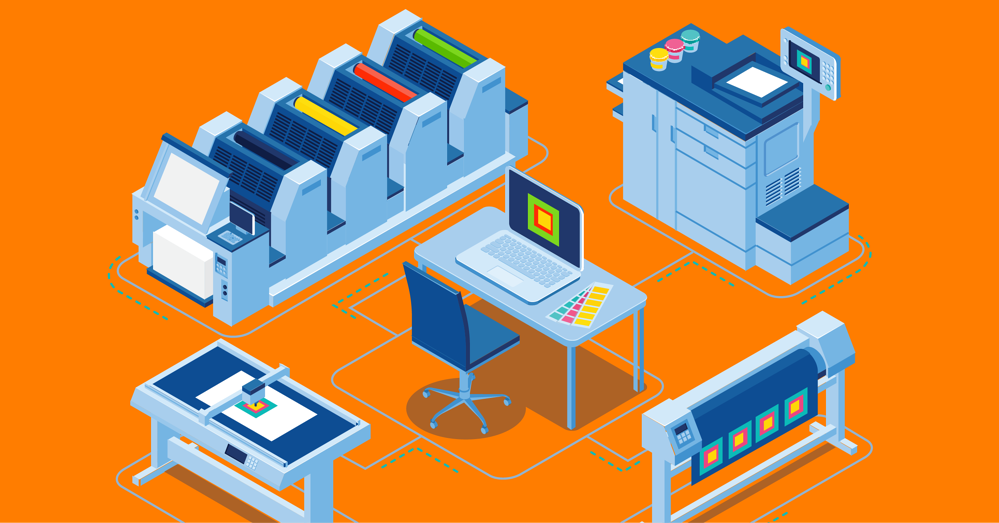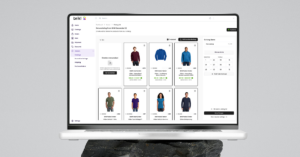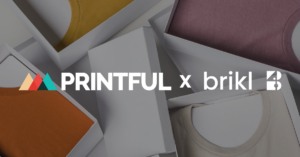If you have a sinking feeling that printing custom t-shirts is a little more complicated than you previously thought, you’re not alone.
Direct to garment printing (DTG) vs. screen printing will battle for your attention in different ways, but which one is really the right method for you and your custom business?
Let’s find out.

What is Screen Printing?
Screen printing is so-called because it uses a mesh screen as a stencil to transfer ink onto a fabric garment.
How Does Screen Printing Work?
This mesh is held fast by a frame and has finer and smaller apertures depending on the level of design detail. Ink placed on top of the frame is forced through the holes of the mesh screen to apply the screen print onto the garment. Applying multiple layers of ink onto the fabric delivers a thicker texture that can be felt against the garment’s surface.
Pros and Cons of Screen Printing
Screen printing is one of these most popular apparel printing methods and can be a more cost-effective way to print as a result. But as a consequence, you could be saddled with large minimum order quantities or (MOQs), so if you’re looking to make one custom t-shirt or two, this method may not be for you.
Increasing numbers of consumers are favoring conscientious, eco-friendly businesses over fast fashion brands. But even if you’re looking to make a batch, be mindful of MOQs and stockpiling products that will go to waste.
What’s more, screen printing commonly uses cheap, plastisol inks that don’t biodegrade. Picking a more eco-conscious shirt printing choice showcases your values as a business, and your customers may even be willing to spend more on your products, helping you offset higher production costs.
Another negative aspect of screen printing is that mesh screens need to be specially made to fit the needs of the design, which can result in a long setup time that can also impact your ability to fulfil orders quickly. So, if your designs are intricate, involve fine details, or feature lots of colors (screen printing allows up to nine), the time it takes to create high-quality prints using this printing method may be high.
However, when it comes to printing versatility, it’s hard to deny that screen printing offers a greater degree of choice when it comes to the materials it can be applied to. Fabric, metal, plastic, and wood can all be screen printed on, making it a good choice if you’re thinking of expanding the product lines your business offers.

- The market size, measured by revenue, of the Custom Screen Printing industry, is $7.8bn in 2022. – Ibisworld
- The market size of the Custom Screen Printing industry in the US has declined 3.2% per year on average between 2017 and 2022. – Ibisworld
- The screen-printing segment held the highest revenue share of more than 56% in 2021. – Grand View Research
Why is Screen Printing Used?
Screen printing delivers vibrant colors that last no matter how many times the garment is washed. The method has also been used so widely because of how one design can be replicated time and time again, making it a clear choice for mass production, for example, for sports teams looking for custom printing for kits and uniforms, and workwear. But, as described above, the cost to the environment and to a small to medium business’ bottom line is causing more business owners to think about more sustainable methods, such as DTG printing.
What is DTG?
Direct to garment printing is a process that uses specialized fabric inkjet printers to apply print designs in ink directly onto a garment.
How Does DTG Printing Work?
A pre-treated garment is placed on a platen system – or a flat platform – that holds it in place while the custom design is digitally applied.
Pros and Cons of Using DTG
Because nothing has to be specially created to accommodate the needs of a design, the turnaround of a DTG process can be as quick as an hour. And as there’s no setup time, DTG printing offers a great level of flexibility when it comes to smaller orders and a cost-effective price tag to match. That’s why many businesses that favor print-on-demand lean towards DTG printing over screen printing methods. However, if necessary, bulk orders can also be created using DTG printers, with some printers offering bulk discounts.

Compared to screen printing, DTG printers also offer a spectrum of color options that are great for detailed and photorealistic designs, so brands, companies, and individuals can unleash their creativity. And as the water-based D2 inks used in the DTG printing process work best on natural fibers, the environmental cost of creating a custom shirt, for example, is low when compared to screen printing.
However, DTG isn’t perfect, with the process sometimes resulting in transparencies from elements that aren’t solid. As DTG printing relies on pixel mapping, it will try and fill the missing pixels by spreading ink. This can be avoided, though, by a process known as semi-transparency by halftoning.
- DTG printed garments represent around 9% of the printed T-shirt market on a global basis, with North America in the lead.
- The North American DTG market is valued at over $2.5 billion with a compound annual growth rate of 10.5% through 2021.
- Mass customization, increased personalization, and environmental benefits are fueling the growth of short-run print on demand.
- Digital printing is a cost-efficient choice for print service providers in the garment decoration industry, where there is a high profit margin and great demand. – Polyprint DTG
Need advice on the best manufacturing methods for your custom or promotional business? Or has this article covered everything you wanted to know, and you’re ready to sell? Let us know in the comments below.





